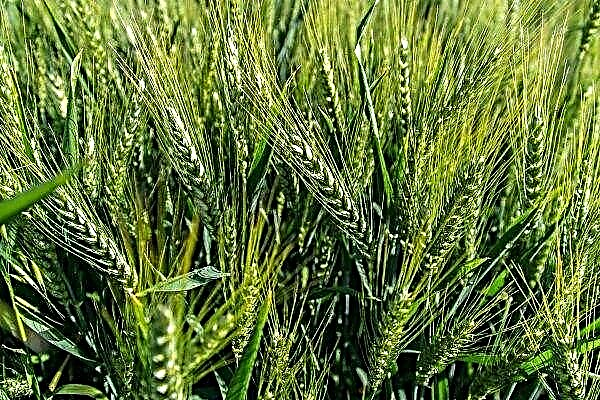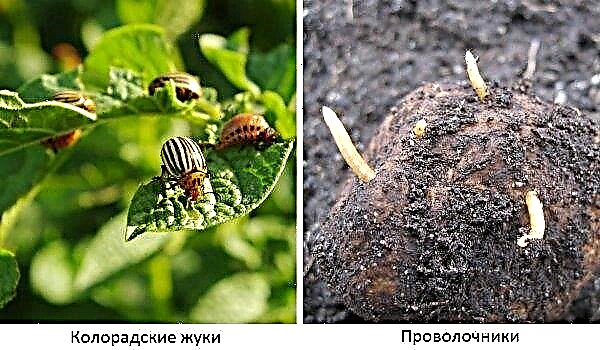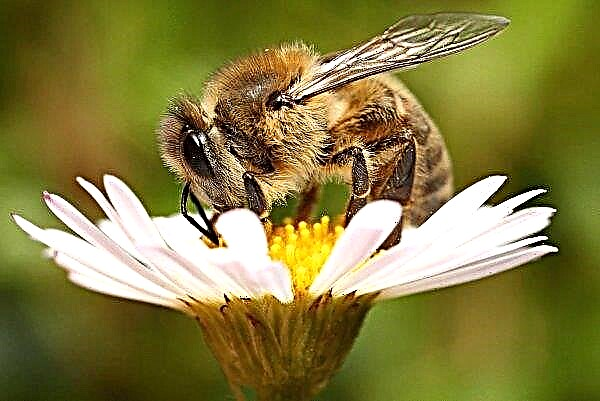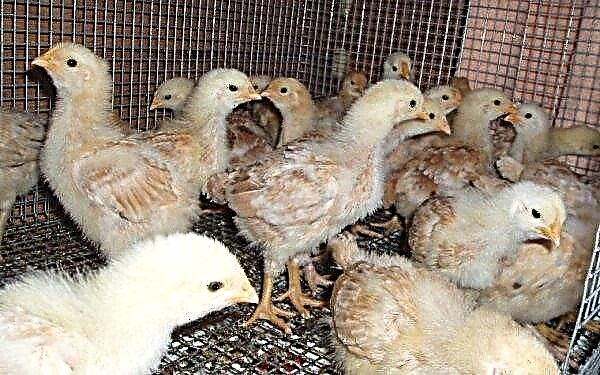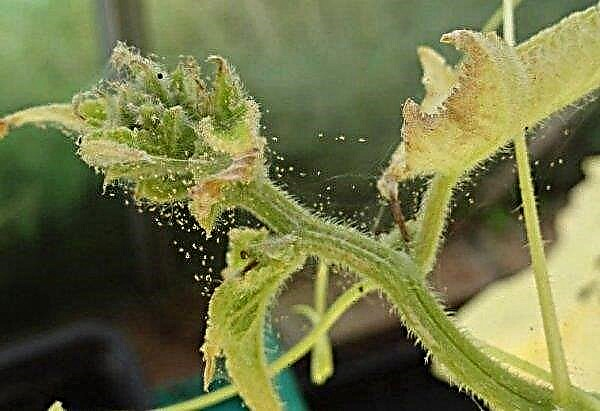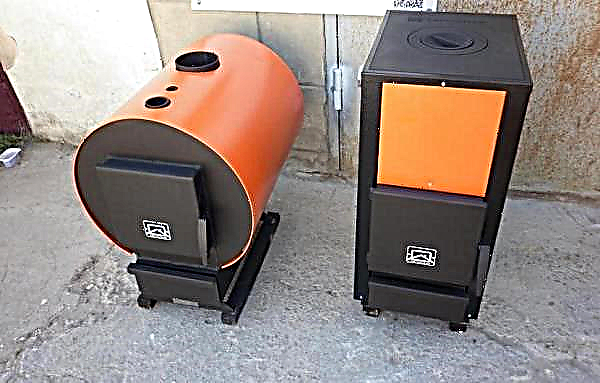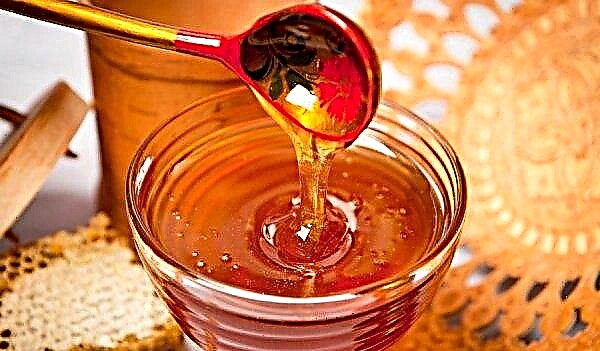For several decades now, carrots have been a traditional agricultural crop, so today there is an abundance of all kinds of its varieties: they compare favorably with their unpretentiousness and increased productivity, even in cold climates. This article will examine one of the most popular varieties of vegetables - Bolero F1, and also describe in detail how this carrot differs from other hybrids.
History of the variety
Carrot Bolero F1 is a product of highly professional French selection. A plant was obtained within the walls of Vilmorin, a company that has been manufacturing, breeding and selling planting and seed material for a variety of cultivated plants since the mid-18th century.
Bolero, on the other hand, is the result of the hard work of recent decades, based on only the most productive hybrids of the company. Today, Vilmorin is considered the official author of the variety, however, the seeds are also successfully produced by the equally large Dutch agricultural holding Nickerson Zwaan.
Did you know? In ancient times, in Germany, the roasted fruits of carrots were used to make the so-called “soldier's coffee”». The drink was notable for its equally tonic properties, which is why it is still actively used in German villages.
Carrots are zoned in regions with a temperate cold continental climate - the most acceptable for this are the central regions of Russia, as well as the territories of Ukraine and Belarus.
Description and characteristic
Bolero F1 is a late-ripening high-yielding variety of table carrots of the Nantes type, which requires at least 115–130 days of vegetation to bear fruit.
This is one of the best fruit plants, well suited for industrial and private cultivation. At the same time, the hybrid has its own morphological characteristics, the combination of which allows the plant to differ favorably in the market.

The main distinguishing features from other varieties:
- upright sheet apparatus;
- the plant is able to produce maximum yields in a temperate cold climate;
- Bolero can grow without obstacles even in dense and heavy soil;
- the most productive plants develop on rows and ridges;
- uniform color of the peel and pulp.
Root crop appearance and yield
The fruits of the carrot are cylindrical, pointed at the end, with a length of about 16–22 cm and a diameter of not more than 4 cm. The surface of the root crop is even and smooth, the peel has a rich orange tint.
The crop yield is high, in a temperate climate, the hybrid is able to produce about 6 kg / m² of fruit. At the same time, the root crops themselves differ in a rather large mass - the indicator is in the range of 100-200 g.
Composition and taste
Bolero carrots are characterized by special taste properties: a mature root crop is distinguished by an ideal combination of juiciness, sweetness and a characteristic carrot aroma. As part of the vegetable, an elevated content of carotene (12–15 mg / 100 g), as well as solids (up to 12% of the total mass) and sugars (8% by weight) were noted.
Such microelements as calcium, potassium, sodium, magnesium, phosphorus, iron, chlorine, zinc, fluorine, iodine and chromium, vitamins E, C, K, H, groups B, A and essential oils are also found in the root crop.
Nutritional Information of Carrots:
| Squirrels | 1.3 g |
| Fats | 0.2 g |
| Carbohydrates | 6.6 g |
| Water | 89 g |
| Alimentary fiber | 2.2 g |
| Ash | 1.2 g |
| Starch | 0.2 g |
| Organic acids | 0.3 g |
Resistance to disease
The specified hybrid is one of the most resistant to the characteristic for the family Umbrella infections and other diseases. At the same time, the plant has an increased resistance to such diseases:
- cercosporosis;
- powdery mildew;
- Alternariosis.
Pros and cons of the variety
Like any other fruit crop, representatives of the Bolero F1 variety have their advantages and disadvantages. Each grower should definitely get acquainted with them in order to protect himself from unforeseen problems when growing and saving the crop.
- The main advantages of the variety include the following characteristics:
- good yield;
- resistance against most characteristic diseases;
- high resistance to difficult climatic conditions (heat and cold);
- the ability of root crops to be stored for a long time;
- high seed germination rates;
- excellent crop quality and product characteristics;
- root crops are suitable both for fresh consumption and for all kinds of processing, including preservation;
- the variety is ideal for mechanized and manual sowing.

- The hybrid has some disadvantages:
- the degeneration of the variety during the germination of fruits, therefore, it is practically impossible to obtain high-quality seed at home - this requires additional costs when sowing and growing a crop;
- lowering the quality of the crop, including the keeping quality, when grown in the off-season (winter sowing).
Agriculture cultivation and care in the open field
Despite the unpretentiousness of Bolero, in order to grow carrots without any problems, she needs to create special soil and climatic conditions. For the active growth of green mass and root crops, the beds should be provided with good top dressing and watering, otherwise the crop will not acquire the necessary taste and marketability.
Optimal terms and conditions for sowing
For the cultivation of late-ripening varieties of carrots, it is necessary to choose a period so that the soil is warmed up to an indicator of at least + 15 ° C, and excess moisture drops into the lower horizons of the soil. Most often this period is observed from the second half of April to mid-May. But depending on the temperature regime and weather conditions of the growing region, sowing dates may vary.
 Carrots do not like heavy soils, so areas with chernozems or clay soils must be lightened with river sand (1-3 buckets / m²).
Carrots do not like heavy soils, so areas with chernozems or clay soils must be lightened with river sand (1-3 buckets / m²).
The most productive crop is only in well-fertilized and loose soil, so it is recommended to carefully prepare the site before sowing. To do this, in the fall, about 0.5 buckets of humus per m² area are introduced into the soil, and in spring, a week before sowing, the soil is thoroughly loosened to a depth of 20-30 cm.
Also important for the culture is the microclimate in the beds. To comply with the optimal regime, root crops should be planted exclusively in open and well-lit areas, at least 4 m from tall vegetation and garden buildings.
Seed preparation and sowing
Due to the natural low germination, carrot seeds require mandatory preparation before sowing.
Check also

For this, the seeds are soaked in:
- 1% potassium permanganate, about 10-20 minutes;
- 70% alcohol, not more than 10 minutes;
- 3% hydrogen peroxide, about 8-10 hours.
After sterilization, the seed needs to be activated - for this, it is soaked in clean and warm water at room temperature. The procedure is carried out for 10-12 hours, after which the seeds can be sown in the soil. To increase the efficiency of soaking, water can be replaced with solutions of biostimulants - Epin, sodium humate.
Carrots are sown in a row-wise way: on the prepared site create furrows 3-4 cm deep, with a distance between each of at least 15 cm. However, it is best if the row spacing is about 45 cm, which will successfully affect the size of root crops.
Fill the seeds with soil not densely, with a layer of about 2 cm, after which the site should be well watered. To avoid thickening of the sowing, it is imperative to observe the sowing rate, which is about 0.5 g of seeds per m².
Watering and fertilizer application
Carrots are watered regularly - until the first half of July they do this 1-2 times a week, and then the moisture rate is halved. The soil is watered so that the upper, 30-cm layer of soil is completely saturated with water.
For this, it is permissible to use both surface irrigation and moistening under the root. During irrigation use only clean and well-settled water, heated to air temperature.

The root crop needs only 2 times for the entire growing season. The first time this is done 20 days after sowing, the next time the beds are fed approximately 60 after sowing the seeds.
As a top dressing, a complex mixture prepared from 10 liters of water, 2 glasses of wood ash, 1 tbsp. l nitrophosphates, 20 g of potassium nitrate, 20 g of urea and 15 g of superphosphate. The resulting solution is used for irrigation under the root, with a calculation of 5 l / m².
Important! It is forbidden to fertilize the bolero with manure or other organic fertilizers at the time of sowing, — this will lead to unpleasant bitterness in the pulp.
Thinning and weed control
Timely thinning is one of the most effective methods by which you can increase the yield and commercial quality of carrots. With thickening of crops, neighboring plants will compete for soil space and nutrients, so the procedure is mandatory. The beds are thinned out for the first time when the plants reach the phase of 2-3 leaflets. They make it so that a distance of about 2-3 cm is formed between adjacent sprouts. The next time the culture needs thinning, when the aboveground mass stretches to 10 cm: often this period begins 20-25 days after the first thinning.
The beds are thinned out for the first time when the plants reach the phase of 2-3 leaflets. They make it so that a distance of about 2-3 cm is formed between adjacent sprouts. The next time the culture needs thinning, when the aboveground mass stretches to 10 cm: often this period begins 20-25 days after the first thinning.
This time, the distance between plants is increased to 7 cm, which creates ideal conditions for the development of large root crops. When thinning the beds, the distant plants give off a strong and lasting aroma that attracts the carrot fly.

At this time, there is a serious danger of defeat by the pest of all plantings, therefore, during the procedure, you must adhere to some rules:
- thinning is carried out only in the early morning or late evening;
- Before removing the plants, beds need to be carefully watered;
- cut plants are harvested in the part of the plot farthest from the beds, and then they are covered with a dense layer of earth or wood sawdust.
In addition to thinning, carrots must be weeded, which helps protect plants from weeds. The procedure is carried out periodically, at least 1 time in 2 weeks, while the soil is loosened to a depth of about 10 cm. In order not to cause excessive drying of the soil, weeding should be carried out only 1-2 days after precipitation or irrigation.

Major diseases and pests of the variety
In most cases, the Bolero variety is resistant to almost all characteristic Umbrella diseases and pests. However, often if the conditions of care and agricultural technology are not respected, carrot crops can be the best environment for the development of fungi and harmful insects. In most cases, this neighborhood leads not only to a sharp decrease in productivity, but also to the destruction of plantations.
Did you know? The largest carrot fruit was grown in the USA in 2017. Local farmer Kristofer Kvally managed to get a root crop weighing 10 kg, while during the cultivation of the vegetable used the traditional technology without the use of growth hormones.
The main diseases of carrots, methods of control and prevention
| Title | Methods of control and prevention |
| Fomoz | The infection is not treatable, therefore all affected plants and fruits are removed and disposed of. The best prophylaxis of fomosis is considered timely dressing of beds, as well as careful preparation of the site and seeds for sowing |
| White rot | They fight the disease with any complex fungicide based on cuprum compounds (Copper Chloride, Allette, Blue Bordeaux, etc.). Prevention is timely bedding and quality fertilizing of the plot before sowing |
| Gray rot | Treat affected plants by spraying with 1% Bordeaux fluid. Prevention of infection is timely feeding |
| Rhizoctonia | Eliminate pathology by spraying with copper oxychloride. Treatment with the drug is also done for prevention, such procedures are carried out 1 time per month |
| Alternariosis | To eliminate the causative agent of infection, the beds are sprayed with the drug "Rovral". For the prevention of alternariosis, it is enough to observe the basics of agricultural technology for growing carrots, as well as to conduct high-quality seed disinfection |
| Bacteriosis | The causative agent of infection cannot be eliminated, so the affected plantings are removed and disposed of. To prevent bacteriosis, seed disinfection before sowing helps, as well as periodic treatment of beds with the drug "Khom" (1 time per month) |
| Cercosporosis | The disease is not amenable to treatment, to prevent it, it is necessary to sterilize the seed material qualitatively, and also to treat young plants with Bordeaux liquid 2 weeks after germination |
| Brown spotting | You can overcome the infection with solutions of the Bravo and Quadris fungicides. To prevent the disease, it is necessary to decontaminate the seed quality, as well as feed and weed the beds on time |

The main pests of culture, methods of control and prevention
| Title | Methods of control and prevention |
| Carrot fly | For the fight and prevention using drugs "Actellic", "Shar Pei", "Decis Profi" and "Ziper". To eliminate the flies, carrots are processed twice; during treatment prophylaxis, they are processed once a month |
| Leaf tree | As the main procedure for elimination and prevention, use spraying with soapy water (150 ml of liquid soap / 10 l of water). An alternative is to dust the beds with tobacco dust. |
| Umbrella moth | Spraying with a solution of Lepidocide or Entobacterin will help to overcome the pest. To prevent the appearance of an umbrella moth, before planting, be sure to dig the soil to a depth of at least 20-30 cm |
| Slug | For the prevention and control of the parasite, spraying is used with 10% sodium chloride solution. Perform the procedure periodically, 1 time in 3-4 weeks |
| Wireworm | You can cope with the pest with the help of the insecticides Bazudi and Aktara. Means are also used for preventive spraying with an interval of 1 time in 30 days |
| Aphid | Affected beds are treated with soapy water (150 ml of liquid soap / 10 l of water). For prevention, they should be irrigated as often as possible with warm water (horse riding) |
| Scoop | The main way to eliminate the insect is considered to be the treatment with Fury, Decis and Politrin preparations. As a preventative measure, spraying with infusion of chamomile or burdock (1 tbsp. L / 1 l of boiling water) will help |
Harvesting and storage
 Harvesting begins in mid-September. During this period, root crops acquire a characteristic shade, size, and also taste characteristics.
Harvesting begins in mid-September. During this period, root crops acquire a characteristic shade, size, and also taste characteristics.
Collect in dry and sunny weather. Fruits are harvested from the site manually, but with an excessively dense substrate, it is permissible to slightly loosen the aisles.
Harvested carrots are laid out in a dry and dark place on a litter of natural porous material (burlap, straw, hay, etc.).
In such conditions, the crop is dried for 1-3 hours, after which the tops are removed on each fruit, then the crop is sorted.
Prepared and dried carrots are stored at temperatures from +1 to +8 ... + 10 ° C in wooden, plastic boxes or in bulk. During storage, root crops are sorted, which helps to keep the fruits fresh almost until the beginning of summer.
Important! You should not harvest in advance — unripe carrots are characterized by low keeping quality.Such a crop instantly decays and is affected by a variety of fungi.
Carrots of the Bolero F1 variety are distinguished by their late ripening, frost resistance, as well as excellent commercial qualities. That is why this hybrid is definitely worth paying attention to both large vegetable producers and owners of small plots.
However, in order to achieve good productivity of this carrot, you should definitely take care not only of the optimal microclimate on the site, but also remember to observe all the subtleties and frequency of care for crops.

